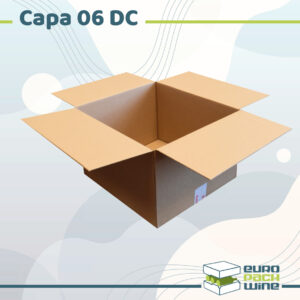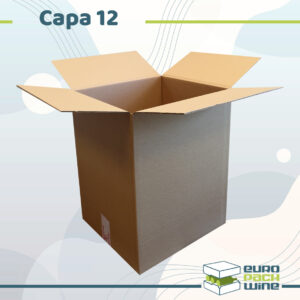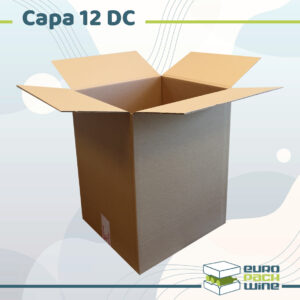All our packaging is made of Expanded Polystyrene, an eco-responsible material, and thanks to this article you'll know why!
Expanded polystyrene

What is expanded polystyrene?
Expanded polystyrene is a plastic material. It is easily identified by its whiteness and lightness. On some packaging, it is marked with the number 6 and the abbreviation PSE.
Where can I find the PSE?
Often referred to simply as polystyrene, expanded polystyrene is an everyday material.
It is used, for example, for :
- Pack eggs, meat, cheese, fruit and vegetables,
- Protect televisions, computers and household appliances,
- Make tide boxes for fishermen,
- Manufacture insulation panels for homes.
It can also be found :
- In children's car seats,
- In helmets for cyclists and motorcyclists,
- In sailboards.
It is also used :
- For making film and theater sets,
- To make sculptures.

How was polystyrene discovered?
Astonishing as it may seem, we have to go back to Egypt 3000 years BC. Embalmers used a resin extracted from an oriental tree: Liquidambar. Then, 4000 years later, in 1786, an English scientist came up with the idea of distilling Liquidambar resin and extracting an oil called Styrax. It was then used as a respiratory stimulant.
In the 19th century, French chemists succeeded in isolating styrene molecules from Styrax and synthesizing them in the laboratory. Finally, in 1925, a German chemist succeeded in assembling several styrene molecules and named them Polystyrene.
It was finally in 1951 that the first expansion of polystyrene was carried out by the German doctor STASNY, who went on to patent EPS.

What are the properties of expanded polystyrene?
EPS has a number of special properties that have enabled us to make our Europackwine packaging fundamental:
- Lightweight: The EPS contains 98% of air.
- A protective material: the packaging acts like a cushion, deforming and absorbing shocks.
- Thermal insulation: EPS protects food and pharmaceutical products from sudden temperature changes, as well as homes.
- A material suitable for food contact, it ensures the freshness and protection of food while preventing the development of bacteria.
- A stable material: it retains all its properties over time.
- Acoustic insulation: used for soundproofing walls and floors.
- It's an eco-responsible material.
Expanded polystyrene: an eco-responsible material?

For the environment?
Expanded polystyrene is a 100% recyclable material:
- Clean packaging is crushed to separate the beads from each other. They are mixed and then molded with new beads to form new packaging or EPS sheets used in house construction.
- Packaging is crushed and mixed with other materials to make it lighter.
- Used packaging is crushed and melted in an "extruder". The result is crystal polystyrene, which is used to manufacture a variety of plastic products: CD cases, disposable camera cases, coat hangers, etc.
- Used and discarded packaging is dissolved in limonene, a natural vegetable oil extracted from the peel of oranges and mandarins.
In 3 minutes, EPS is reduced by 20 times its original volume. It can then be reused after distillation for manufacturing. Click here for more information on the process.
If expanded polystyrene is mixed with other waste, or if it's too dirty to be recycled, it's very easy to burn in an incinerator. It will even help other waste to burn faster. As it burns, it produces a great deal of energy, which is recovered and transformed into electricity, hot water or steam to heat buildings or industrial areas. This saves energy.
EPS uses few raw materials
Thanks to its 98% of air, EPS requires very little expandable polystyrene in its various applications. Just 8 grams to pack 2 minced steaks weighing 115 grams each!
Expanded polystyrene uses little water
As it is manufactured on a steam basis, it consumes very little water. What's more, it's reused in the manufacturing cycle.
PES has little impact on the atmosphere
The steam expansion process limits atmospheric emissions. EPS contains and uses no ozone-depleting gases, and releases no toxic gases when incinerated.
How is polystyrene made?

Step 1: Expandable polystyrene
Expandable polystyrene granules are obtained by polymerizing styrene. They are impregnated with a gas, pentane, which is then used for expansion.
- Polystyrene is a chemical reaction that combines several identical molecules to form a larger molecule.
- Styrene is a molecule combining only carbon and hydrogen. It is derived from petroleum and is produced industrially. But it is also found naturally in certain foods (strawberries, beans, nuts, beer, wine, etc.).
Stage 2: Pre-expansion
Expandable polystyrene granules are obtained by polymerizing styrene. They are impregnated with a gas, pentane, which is then used for expansion (up to 30 times their initial volume).
Stage 3: Maturation of pre-expanded beads
Once pre-expanded, the beads rest in silos for several hours to allow them to dry.
Stage 4: Moulding and packaging
The pre-expanded beads are introduced into a hermetically sealed mold, and subjected to a further injection of steam. They expand, occupying the entire mold space, and weld together to form the packaging.
And that's it! Our Europackwine packaging is now finished and ready for dispatch to our warehouses and distribution centers!






